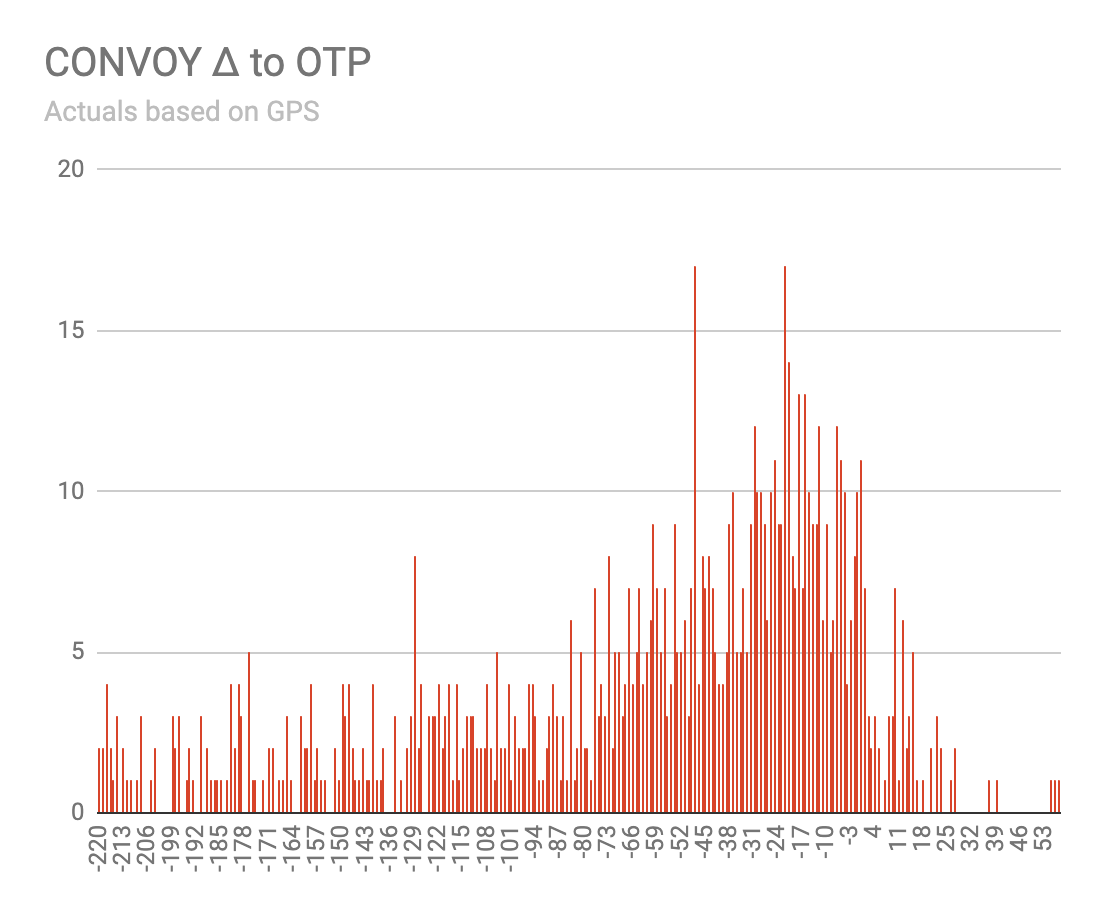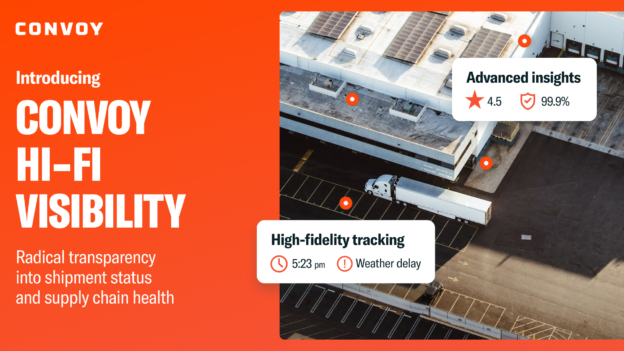How Supply Chain Visibility Holds Carriers Accountable and Improves Decision Making
Shippers • Published on July 8, 2020
Supply chain visibility is a game of inches. You can often spot some of the most obvious faults in your supply chain using your TMS, but game-changing improvements come from spotting small, repetitive patterns in your data over time. Finding these patterns is no easy task, requiring high-quality data to understand the details of your logistics operations.
Said another way, accurate data is table stakes for effectively managing your supply chain.
“OTP” vs. true OTP
To ensure Convoy is providing the best possible supply chain visibility, we recently worked with one shipper to analyze the accuracy of our digital freight network’s on-time pickup (OTP) compared to the brokers and asset-based carriers the shipper was working with. The results were eye-opening.
First, we took the anonymized OTP data from all non-Convoy carriers and plotted it on a chart comparing carrier arrival time with scheduled appointment time:

According to this data, the majority of carriers arrived exactly on time for their scheduled appointment – not a minute late or a minute early. You’ll see smaller spikes every 30 minutes before or after. There were only a few instances in which carriers reported a time not ending in :00 or :30.
This data is what happens when carriers manually self-report on-time performance data and round to the nearest half-hour. The result? It’s impossible to know which carriers actually showed up early or late, by how many minutes, and how the carriers’ performance compared to one another.
Contrast this with the chart below showing Convoy’s arrival times. Unlike the manual self-reporting by brokers and assets, this data is accurate to the minute because it’s based on the GPS readings in the Convoy app as the driver entered the geofenced facility.

While the distribution of arrival times is vaguely the same shape, Convoy’s true OTP based on satellites and GPS data accurately reflects reality, providing our customer with the precision they need to make effective decisions from the data.
Accuracy and accountability
By relying on manual self-reporting, shippers introduce inaccurate data into their supply chain analytics. Specifically, this method of reporting poses two problems:
- OTP and OTD data can be gamed.
- The inaccuracy of the data limits your ability to make improvements.
When you were in school, you weren’t allowed to grade your own paper for these same reasons. There had to be a system in place that enforced the accuracy and accountability of your work.
Similarly, your understanding of your supply chain’s operational efficiency, and the decisions you make based on it, are only as good as the data you get from your carriers.
Convoy’s digital freight network is designed to provide you with the most accurate, high-quality performance data because we believe you should expect transparency from all your carriers. Without true OTP and OTD, you limit your ability to effectively rank carriers, work together to make improvements, and make the best decisions for your business.
Interestingly in the case study above, if you take Convoy’s data and round it to the same level of granularity as the non-Convoy carriers, Convoy was on-time or early on a substantially higher percentage of loads.
To learn how Convoy can improve the accuracy of your data, contact us today.



